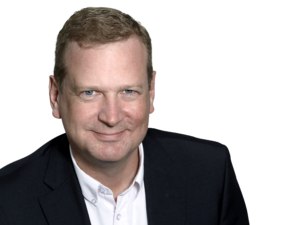
Curasight riktar sig till den snabbväxande marknaden för nuklearmedicin
Det danska bioteknikbolaget Curasight utvecklar en teknik för förbättrad diagnos och behandling av cancer. För att ytterligare utveckla sina projekt och för att positionera sig på den snabbt växande marknaden för nuklearmedicin siktar bolaget på att ta in 48,8 MDKK genom lösen av teckningsoptioner. BioStock pratade med vd Ulrich Krasilnikoff för att få hans syn på marknadspotentialen och kommande aktiviteter för bolaget.
Marknaden för nuklearmedicin växer i snabb takt. Drivet av en åldrande befolkning, en bredare användning av nuklearmedicin och introduktionen av nya radiofarmaka beräknas den öka från 5,9 miljarder EUR 2019 till 30 miljarder EUR 2030. Danska Curasight siktar på att ta sig in på denna snabbt växande marknad med sina två huvudprodukter, uTRACE för cancerdiagnostik och uTREAT för behandling av cancer.
Fokus på prostatacancer och behandling av hjärncancer
uTRACE har visat sig vara säker i så många som åtta forskarinitierade fas II-studier, där mer än 400 patienter har skannats utan några större negativa effekter. Vidare visar en avslutad klinisk fas II-studie på patienter med prostatacancer att uTRACE potentiellt kan ersätta en stor andel 12-nåls prostatabiopsier och indikerar även att uTRACE kan vara ett icke-invasivt verktyg för att utvärdera prostatacancer, så Curasight fokuserar nu på uTRACE för diagnos av prostatacancer.
uTREAT har visat sig vara effektiv och säker i prekliniska modeller av både kolorektal och prostatacancer. Nyligen inleddes också en preklinisk studie av aggressiv hjärncancer, glioblastom, och de första positiva resultaten har rapporterats, vilket innebär att uTREAT nu går vidare till fortsatta studier. Läs mer.
Enorm marknad för nuklearmedicin
Följaktligen följer bolaget nu två huvudspår i den pågående produktutvecklingen, uTRACE för diagnos av prostatacancer och hjärncancer och uTREAT för behandling av hjärncancer.
Tittar man på marknadspotentialen för dessa två indikationer och börjar med diagnostik av prostatacancer, uppskattar Curasight att det årligen tillkommer 524 000 nya patienter med prostatacancer i USA och EU. Baserat på amerikansk prissättning av ett jämförbart spårämne skulle en PET-skanning per patient resultera i en potentiell marknadsstorlek för uTRACE på cirka 1 miljard EUR per år. I de flesta fall är emellertid upprepade skanningar nödvändiga, vilket skulle leda till en ännu större marknad.
Ser man på marknaden för hjärncancer ser den också mycket lovande ut. Varje år tillkommer det cirka 65 000 nya fall av hjärncancer i USA och EU, varav cirka 30 000 är aggressiv hjärncancer (glioblastom). Kostnaden för en skanning är 3 000 EUR vilket summerar till 195 miljoner EUR årligen. Kostnaden för behandlingen av dessa patienter är ännu högre och uppgår till 5,1 miljarder EUR årligen.
Curasights långsiktiga mål är att nå en betydande marknadsandel på denna enorma marknad.
Kommentarer från vd Ulrich Krasilnikoff
BioStock pratade med Curasights vd Ulrich Krasilnikoff för att få hans syn på bolagets framtid samt kommentarer om konkurrenslandskapet inom nuklearmedicin.

Aiming at the huge cancer treatment landscape, how are you looking to position uTRACE and uTREAT and what potential do you see?
— uTRACE is used for diagnostics and has or is currently being tested in 8 cancer indications. This means that in the long run, many patients will be scanned with uTRACE both in relation to the determination of the diagnosis, but also as an ongoing follow-up of the initiated treatment for the patient. So the market potential for uTRACE is huge – as hospitals can use uTRACE in conjunction with their current PET-CT scanners. At the same time, the use of uTRACE should make it faster, more gentle for the patient and cheaper for the healthcare system to make the correct diagnosis and thus treatment for the patient.
— With uTREAT, which mainly binds to the cancer cells (expressing uPAR) and thus irradiates tumours from the inside, we also see a huge market ahead. In the long term we believe that targeted radionuclide treatment will replace external radiation therapy. Approx. 50% of all cancer patients today receive external radiation therapy as part of their treatment, but the effect is often modest, as they also irradiate the healthy tissue around the cancer, which puts a limit on how much radiation the patient can receive.
— So overall, we have two very strong products that can be used for diagnostics and treatment, respectively, as well as in combination with what is called the theranostic principle.
What is your go to market strategy for the products?
— The market strategy is multifaceted – as you have to determine a strategy within each individual cancer indication.
— Brain cancer is a very difficult disease to treat and will typically be concentrated in a few specialist centres in each country. Here we will probably be responsible for the distribution, as we know almost all cancer centres within that area in the US and the EU. On the other hand, if we look at prostate cancer, so the treatment here is more decentralised, why it would be obvious to enter into a partnership agreement with one or two big pharma companies that can penetrate the market.
The exercise of the TO1 warrants will provide a total of 48,8 MDKK. How will this money be spent?
— If all warrants are exercised, Curasight will have a very good financial position, which will be used to accelerate our plans and unfold the full potential of our platform. This includes, to support and accelerate the programs within brain cancer and prostate cancer – and then we must see what the future will bring in addition.
What are the most important activities in the near term?
— Curasight has several important activities in the near term, meaning that the remaining part of 2021 is thus very focused on progress in the glioblastoma indication, both for uTREAT and uTRACE. We expect the investigator-initiated phase IIb trial in glioblastoma to be completed by the end of 2021 and in continuation of this, the clinical data will be published when the researchers at Rigshospitalet have concluded on the data. This will form the basis for an investigational new drug applications for a phase III in glioblastoma in the second part of 2022. Furthermore, preclinical therapy study in gliomastoma based on uTREAT is expected to be finalised in 2022 and serve as basis for moving uTREAT into phase I clinical trials.
Innehållet i BioStocks nyheter och analyser är oberoende men BioStocks verksamhet är i viss mån finansierad av bolag i branschen. Detta inlägg avser ett bolag som BioStock erhållit finansiering från.


